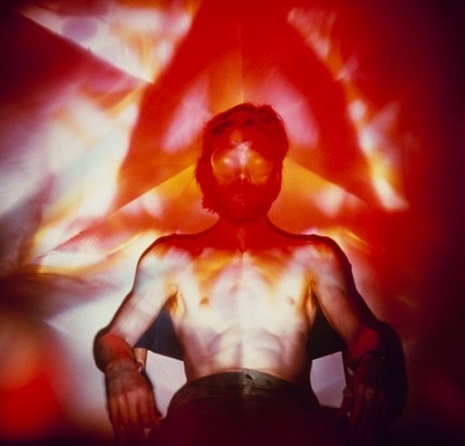
Artist Richard Aldcroft, in his “Infinity Projector,” featured on a 1966 cover of LIFE. The goggles prevented binocular vision and showed kaleidoscopic images.
“The Company of Us,” or USCO, was an ambitious, groundbreaking collective of artists and engineers heavily associated with LSD, although they formed in 1962, a few years prior to the explosion in public awareness of the drug. They counted among their ranks now notable artists like Gerd Stern, Stan VanDerBeek and Jud Yalkut, but at the time their ethos was rooted in collaboration and anonymity, so they only took credit for their productions as a group. Ironically, their work was actually helped by their druggy reputation, as they were featured in a 1966 LIFE magazine cover story—LIFE had published an editorial against the prohibition of LSD six months prior to USCO’s article.
The photos you see here are from their 1966 show at New York’s Riverside Museum which featured USCO’s psychedelic work in six enormous, completely tripped-out rooms. The collective created surreal environments—like “light gardens” and painted shelters—complete with electronic sounds, projections, flashing and pulsating lights, even an area with sensory goggles that blocked out any external vision. Everything moved and nothing was silent. The work was half druggy multi-media show, half interactive architecture, and it was quite the endeavor for a small bunch of outsider artists.
Stern says of the labor involved:
Part of the real problem that we had at USCO was that everything we did was very heavy. We would travel with a Volkswagen bus and trailers and thousands of pounds of equipment. Schlepping. In fact, I once wrote a piece for one of the art magazines called “The Artist as Schlepper.”
As I’m sure you would guess from an art show comprised of psychedelic rooms, many viewers of USCO’s “Down By the Riverside” exhibit were probably chemically altered, transforming the experience into a sort of amusement park of the senses where you could sit and fiddle with AV equipment or just lay there and watch the walls move. Of course, lingering and prolonged “observation” was encouraged—the show was actually where the term “be-in” was coined.
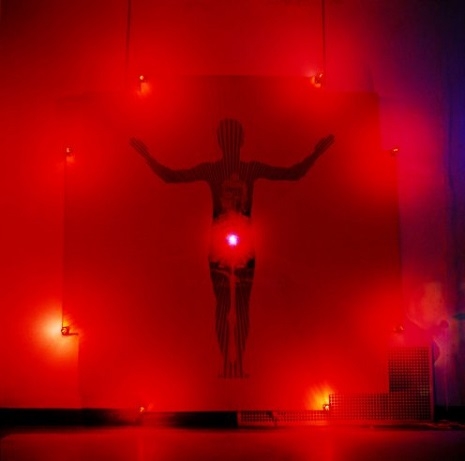
Painting of Hindu deity, which was flashed with color lights.
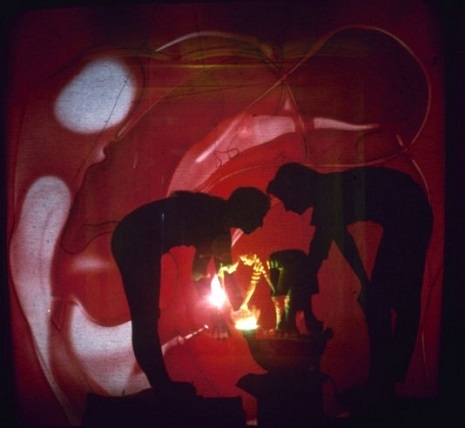
Artists Rudi Stern and Jackie Cassen work on an abstract slide show
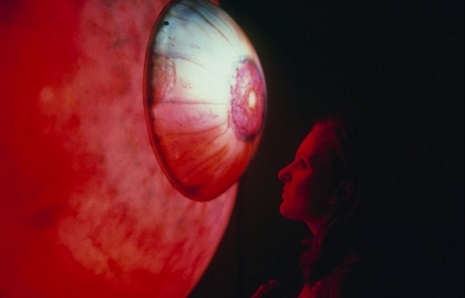
Plastic eye illuminated with shifting light

Artist Richard Aldcroft with his Infinity Projector again, shifting to another color palette
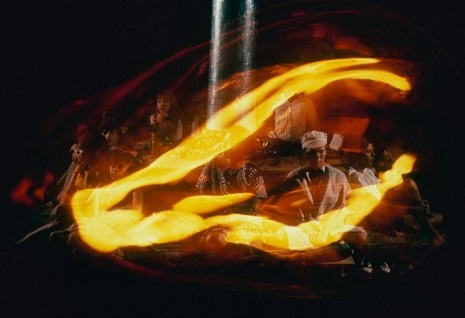
Paintings shown in double exposure with slowly pulsating light

Painting with metaphysical imagery—note the circular double-helix
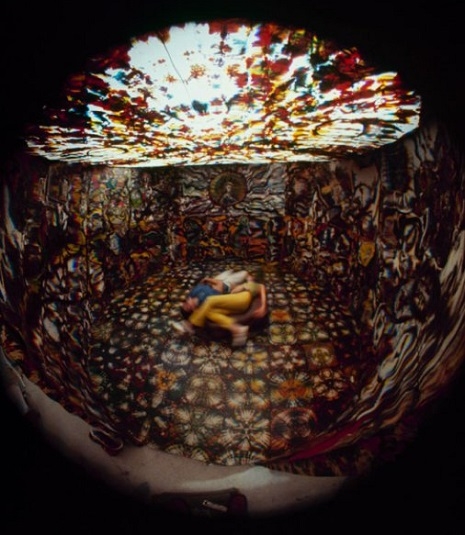
Viewers would lay on a rotating couch and watch the walls, painted with gods, demons and humans. Every surface of the “cave” was painted.